Town on the Move
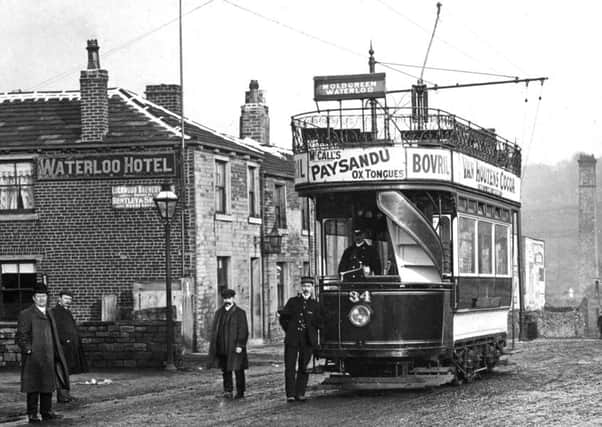

In 1877, a private company tried to obtain powers to work tramways in the town. Their application was successfully opposed by the Corporation, which promoted its own Bill in 1879 securing powers to construct tramways. These were approved during August 1880 and construction started in the following year. Thus, the town gained the proud distinction of being the first municipality in Great Britain to construct its own tramway system.
The Act did not permit the Corporation to work the tramways so it was decided to lease them. When no suitable offer was received, a further application was made to the Board of Trade for an amendment which would allow the Corporation to operate the system.
Advertisement
Hide AdAdvertisement
Hide AdA steam tram drawing a car was given its first trial run on the steep gradient of Chapel Hill on November 13, 1882, and the first 10 miles of track was granted a certificate of fitness on November 29, 1882. The system was 4ft 7¾in. gauge. The track was on the Barker system comprising a light section of rail spiked to metal chairs on a continuous bed of seven inch concrete and paved with six inch stone setts.
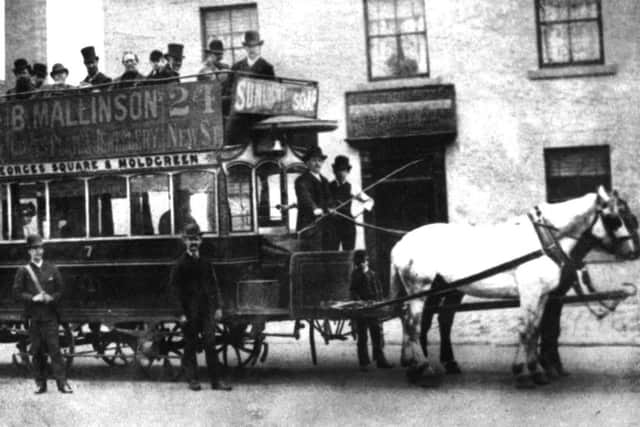

The Corporation bought five steam trams from William Wilkinson, of Wigan, to haul five cars which they acquired from the Starbuck Car & Wagon Co. Birkenhead.
Huddersfield Corporation opened its first steam tram route – between Lockwood (Red Lion Hotel) and Fartown (Royal Hotel) – on January 11, 1883, and with the exception of the Moldgreen section, which for three years from 1885 to 1888 was worked by horse traction, the entire system was powered by steam from the outset.
Larger cars were acquired from companies in Leeds, Kitsons and Greens, in subsequent years, necessitating the track to be reconstructed and repaved between 1888-1893. Advertising on vehicles began in 1885 and also the carriage of parcels in 1887.
Advertisement
Hide AdAdvertisement
Hide AdAn annual report of March 31, 1897, stated the Corporation had 26 steam cars, 26 double-deck bogie cars with a track mileage of 22.16. By the turn of the century a decision was taken to convert the whole system to electric traction. The last steam trams in regular service ran on the Almondbury and Honley routes on June 17, 1902.
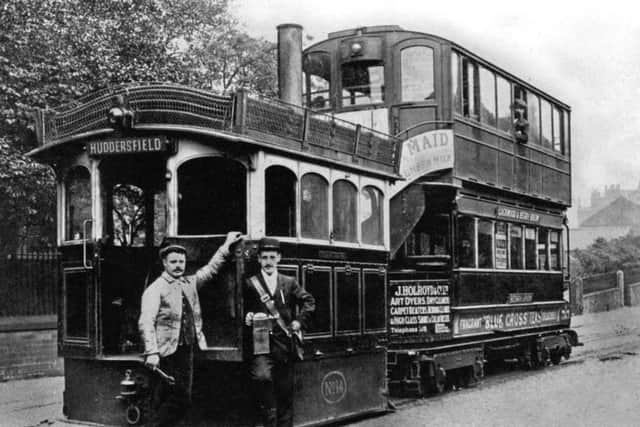

Huddersfield’s first electric car was put into service on the Lindley route on February 14, 1901, and on the same day, electric cars commenced on the Outlane and the Lindley via Edgerton and Holly Bank Road routes.
The first 25 electric trams were acquired from G F Milnes & Co, of Hadley. They seated 53 (24 downstairs/29 upstairs) and were painted in vermilion and cream.
Between February 1901 and July 1902, the Corporation opened 11 electric tram routes covering 29 miles. Services radiated from the town centre to a number of surrounding locations including Brighouse, Bradley, Waterloo, Almondbury, Newsome, Honley, Crosland Moor, Marsden, Dod Lea, Outlane, West Vale and Sheepbridge. By 1903 the rolling stock had increased to 70 tramcars.
Advertisement
Hide AdAdvertisement
Hide AdIn a unique move, Huddersfield Corporation ran coal trains in specially designed trucks from September 1904. This was following an agreement made with Martin, Sons & Co to carry all their coal requirements from Hillhouse railway sidings. It was an arrangement that was carried on until the conversion to trolley buses.
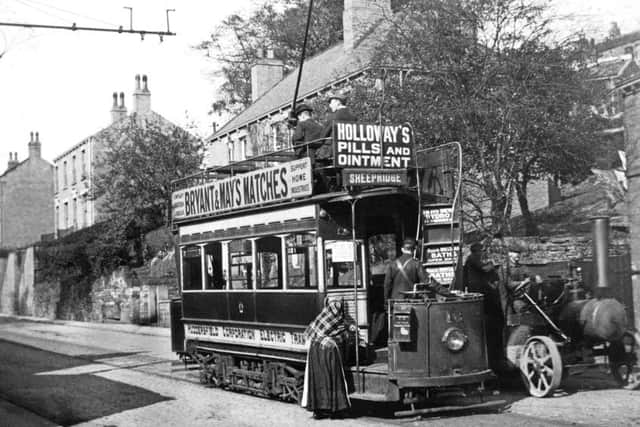

Unfortunately, Huddersfield electric tramways experienced several mishaps during the Edwardian era. On April 22, 1905, a tram left the top of Northumberland Street with a driver and conductor on board. It ran out of control on a downhill section, throwing the conductor on to the road. The driver kept at his post until the car reached the terminus and ran off the end of the rails. Then, he hurried through the car to the rear and jumped off.
The car ran down the road, eventually crashing through a garden wall. The driver was badly hurt and the conductor severely shaken.
In another incident on June 6, 1905, a tram, on its way from Lindley to Huddersfield, went out of the control of driver J. Woffenden, when travelling down Holly Bank Road, a steep gradient. It left the track at the curve of the main road, and crashed through a 4ft wall into a field. The driver escaped without serious injury, the conductor suffered slight injuries to his knees. There were a few passengers in the car, and they escaped with a severe shaking.
Advertisement
Hide AdAdvertisement
Hide AdSeveral Huddersfield trams were used for special occasions. A double deck, open top car was decorated for the Coronation celebrations in June 1911 and during 1914 another car was used as a means of appealing for recruits. As men were called up for military service, female conductors were employed until 1919 but they were not called upon to drive the trams.
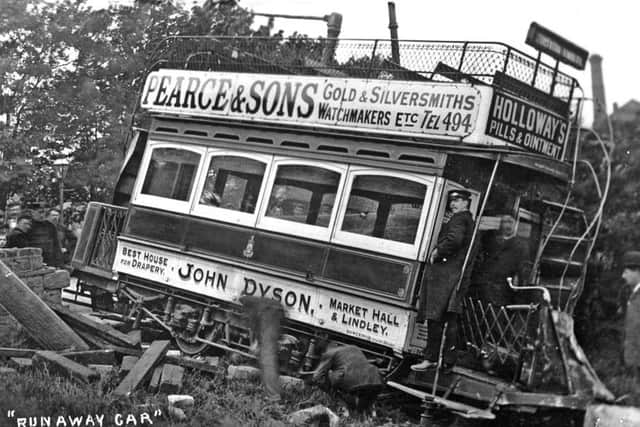

In 1920, a double deck, open top car was decorated to celebrate the achievements of Huddersfield Town Football Club. FA Cup runners-up, the club won the trophy in 1922.
In later years further trams were acquired and improvements were made to the system – including an extension to Brighouse via Rastrick.
Huddersfield Corporation took a decision to trial trolleybuses in the early 1930s and the first tram route to be converted closed in 1933. Then, lines were closed as the new trolleybus infrastructure was introduced. The last Huddersfield tram ran on June 29, 1940.